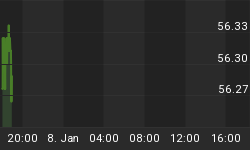
At its 2014 highs, sporting a 1076% gain from the bear market depths of 2008, are traders and investors about to sell out on this e-commerce industry titan?
At present, trading just north of $306, Amazon is exchanging hands for nearly 25% less than it was at its all time high of $408.06 per share.
As cited within the accompanying links, from the Financial Times, to the Motley Fool, there is no shortage of fundamental opinions surrounding future prospects for Amazon.
- Amazon missteps fail to dent optimism.
- Can Amazon.com stock turn around its 20% dip in 2015?
- Can Amazon overcome stiff competition with its innovation?

From a technical perspective, the run-up from 2008 appears rather mature.
Incredibly, that last parabolic move to $408 threw Amazon a shade over its 3rd upper channel expansion within its very impressive long-term secular uptrend.
Since peaking at $408, share values have declined by 25%, and hover atop the 2nd channel expansion boundary, which is currently in confluence with a simple uptrend line drawn from the bear market low in 2008.
The initial sharp move down from the all-time highs appears from an Elliott Wave perspective, to be bearishly impulsive, which does not bode well for extreme optimists.
However, since finding temporary support atop the 2nd trend-channel expansion line, the shares have been trading correctively, - sideways with a downside bias.
Price Wins Out Over Fundamentals Each and Every Day
In contrast to developing a vested knee-jerk market bias based purely on reported fundamental opinions, on behalf of the legions of investors badly burned by great story stocks in the past, we rely predominantly on charts and technical analysis to provide guidance and to do our bidding.
The simple logic behind adopting a sound strategic-technical approach assumes that all such news, analysis, and fundamental knowledge reflects itself automatically in the current share value via the price discovery process of the marketplace.
We should all know by now that it is quite common for price levels of stocks and commodities to frequently dislocate themselves from any semblance of fundamental reality, and at times excessively so. The tactical price-driven technical approach is the best strategy to deal effectively with such excess.
In closing, if prime mover Amazon doesn't watch its step in 2015, it just may be the recipient of a layoff notice droned to its headquarters courtesy the price-driven universe of astute traders and investors.
For a closer look at potential downside price targets and the trading patterns setting up in Amazon over the near-term, read Amazon: If stock price breaks down, how low can it go?
Until Next Time,
Trade Better / Invest Smarter
The Chart Cast Pilotand Elliott Wave Technology's Guardian Revere Long-Term Trend Monitorare the proud sponsors of this communication.
















